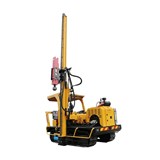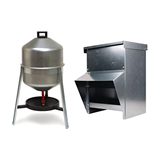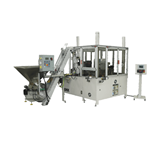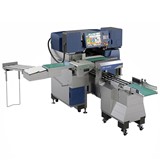If only 0.1 per cent of the incoming radiation could be converted into usable energy, all of Australia's energy needs could be supplied by the sun.
But the industry is relatively underdeveloped, and suppliers say the government has been slow to provide incentives, leaving too much up to the market.
The outlook for electricity generation from solar energy depends critically on the commercialisation of large-scale solar plants that will reduce investment costs and risks.
The government's aim is to establish up to 1000 megawatts (MW) of solar power generation capacity by 2030, and recently it announced that it will provide $1.5bn for four larger scale installations, though more money is still needed from the private sector to ensure the schemes will go ahead.
Currently there is not much over 100MW of installed capacity, most of which is small-scale domestic installations - unlikely to give the market the boost it needs.
Relatively high capital costs and risks remain the primary limitations.
The government has introduced renewable energy certificates (RECs), which aim to reward firms developing renewables.
But the measure isn't hugely helpful in encouraging the development of the solar energy market, according to Peter van der Wyk, solar systems designer at the Rainbow Power Company.
"We're not keen on the REC mechanism, it will not help the solar industry develop. It replaced a much better system of direct grants, which was phased out, and was more beneficial," he said.
RECs are a market-based measure which do not specify technologies, and reward the cheapest form of renewable energy – usually wind power – leaving the solar industry high and dry.
When accused of inaction, the government points to feed-in tariffs. The tariffs, introduced over the last two years, provide a guaranteed price for those selling electricity generated from solar power into the grid, and have been used to great effect to encourage the solar markets in countries such as Spain and Germany, now world leaders in the market.
But the Australian tariffs were only introduced two years ago and only reward small-scale domestic solar generators, not the much larger commercial and utility scale installations which are needed to help the industry develop.
"We'd like to see nation-wide tariffs targeted specifically at larger solar installations," said Max Sylvester, co-founder of Australian solar firm Energy Matters. "The current system is a joke."
Only one factory in Australia actually makes solar panels, and it has just recently reopened. The market struggles with competition from overseas, where cheap labour and more developed supply chains means panels can be manufactured for much less money.
"It's going to be a long time before we can compete globally on panel manufacturing," said Damien Moyse, Energy Projects & Policy Manager and the Alternative Technology Association. "But we have plenty of engineers, technicians and construction expertise which could be put to good use in the solar market, if it begins to flourish."


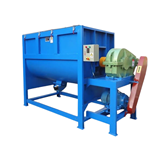
-160x160-state_article-rel-cat.png)
-160x160-state_article-rel-cat.png)

-160x160-state_article-rel-cat.png)




-160x160-state_article-rel-cat.png)





